In a paper published in Ecology in 2003, Nick Haddad, David Bowne, Alan Cunningham, Brent Danielson, Douglas Levey, Sarah Sargent and Tim Spira, synthesized findings from a large-scale experiment to show that corridors aided movement between habitat patches, although the strength of the effect varied across taxa. Fourteen years after the paper was published, I asked Nick Haddad about his motivation to carry out this study, his memories of the work that went into it, and what we have learnt since about the role of corridors.
Citation: Haddad, N. M., Bowne, D. R., Cunningham, A., Danielson, B. J., Levey, D. J., Sargent, S., & Spira, T. (2003). Corridor use by diverse taxa. Ecology, 84(3), 609-615.
Date of interview: Questions sent by email on 8th January 2017; responses received by email on 6th February 2017; responses updated on 24th August 2020.
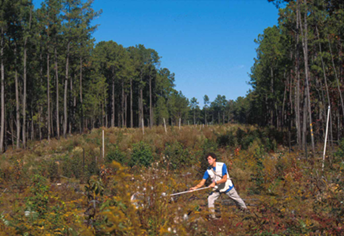
Nick Haddad catching a butterfly
Hari Sridhar: From looking at your CV and publication profile, I came to know that your PhD was also on the topic of corridors. Could you please trace the motivation for this paper, in relation to the work you had done earlier on corridors?
Nick Haddad: The 2003 paper represented the culmination of a decade of research in The Corridor Project. I launched the experiment with Robert Cheney and the United States Forest Service at the beginning of my PhD in 1993. My own focus was on butterflies, but we wanted to build a collaboration with interests in different plants and animals to create a stronger and more general test of the effects of corridors. We teamed with four other labs and we worked in parallel to test the effects of corridors on dispersal of butterflies, bee pollinators, mice and rates, and seeds dispersed by birds. We had published on the individual groups (my first papers on butterflies appeared in 1999 (1, 2, 3)). The 2003 paper synthesized what had been learned across the collaboration.
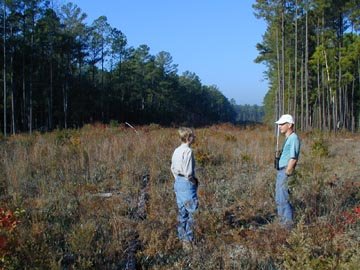
An experimental corridor
HS: Stepping back, could you please tell us how you got interested in the topic of corridors and butterflies for your PhD? How did you decide to work in the Savanna River National Environmental Research Park?
NH: My interested in spatial ecology began as an undergraduate at Stanford. After deciding to pursue ecology, then graduate student Tom Sisk (now at Northern Arizona University) advised my first research project in 1990 on the effects of habitat edges on bird communities. Working at Jasper Ridge Biological Preserve, we tested how the type of matrix habitat (chaparral or grassland) affected the bird community composition of similar sized oak forest habitat fragments of similar size. My interest in research on spatial ecology of birds became stronger while working with Gretchen Daily on Red-naped Sapsuckers at Rocky Mountain Biological Lab. The research focused on the role of the birds in maintaining diversity in bird communities through construction of nest holes. I remember being drawn to how the spatial distribution of aspen trees (for nests) and willow shrubs (for food) affected the bird’s spatial distribution.
My research as an undergraduate focused entirely on birds, and it was on birds that I intended to conduct my PhD research with Ron Pulliam at University of Georgia. This was true even after six months before graduate school in Guatemala catching and identifying butterflies. Upon entering graduate school, others assumed that because I had worked with Paul Ehrlich’s lab at Stanford, butterflies were my study species of interest. It wasn’t until later that I had the epiphany that butterflies were the model organism with which I could best test hypotheses in spatial ecology at experimental scales.
Armed with a focus on spatial ecology, I began research at Savannah River Site. I saw immediately that there was an opportunity to conduct large-scale experiments in spatial ecology. The US Forest station there already harvested timber, had interest in supporting basic research, and was keen to understand how principles of ecology could be used to guide management. The Research Manager there, John Blake, has, since the beginning, encouraged our efforts in large experiments. The research has been successful only because of the active collaboration between academic researchers and the US Forest Service.
I have the US Forest Service and specifically John Blake to thank that the experiment became focused specifically on corridors. When I wrote the first draft proposals they focused on basic spatial ecology of fragmented landscapes. My intent was solely to study dispersal and spatial population dynamics. With that perspective, our first proposal for experimental fragments must have looked, to the US Forest Service, like we had taken a shotgun to blast a map of the site that identified the locations of our proposed research plots. Through a series of iterations, landscape corridors could unite basic ecology and applied conservation.
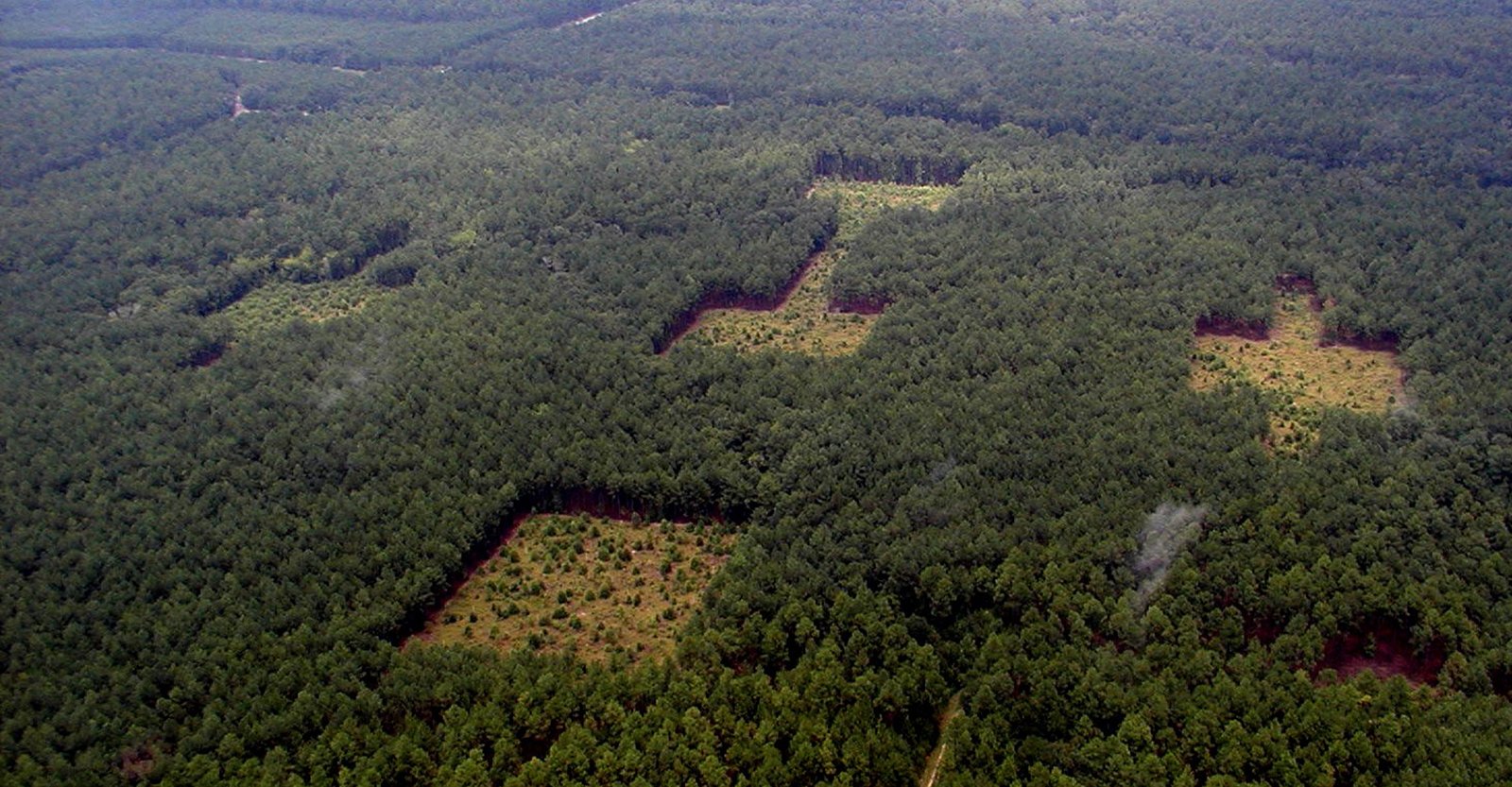
Experimental fragments and corridors at Savannah River Site (© Ellen Damschen)
HS: Do you continue to work in this site till today? When was the last time you visited this site? In what ways do you think this site has changed since the time you worked there for this study?
NH: I have continued to do research at Savannah River Site on The Corridor Project for 28 years. When we launched the experiment, there was no vision longer than my dissertation. When I left in 1997, I thought the Corridor Project might end. A series of events, including a team of committed collaborators, a successful NSF grant, and a new faculty position in the southeastern US, stimulated development of a long-term vision. My research is and always has been as part of a large collaborative team. The team of Principle Investigators has evolved over the years, currently including Doug Levey (NSF), Josh Tewksbury (Future Earth), Ellen Damschen (University of Wisconsin), John Orrock (University of Wisconsin), Lars Brudvig (Michigan State), and Julian Resasco (University of Colorado).
Our research sites have changed in three ways. First, our research focus has expanded from the first decade on dispersal to the next decade on populations and communities. Our research has expanded to more species and more ecological processes than ever envisioned when we first designed the experiment. Second, we used the first round of experimental sites that were created in 1993 focused on corridor length to create a stronger experimental design in 2000. Third, our focus turned to the role of corridors in restoring habitats within fragments.
HS: Could you give us a sense of what your daily routine was during the fieldwork for this study – where did you stay, how did you commute, who were the people who helped you with fieldwork etc.?
NH: We created the experiment in the days prior to GPS. We used a tape measure, loppers and machetes to cut shrubs, and a laser transit. I will admit that I was shocked when I saw the first aerial photograph (before the days of Google Earth) and saw the regular squares and corridors.
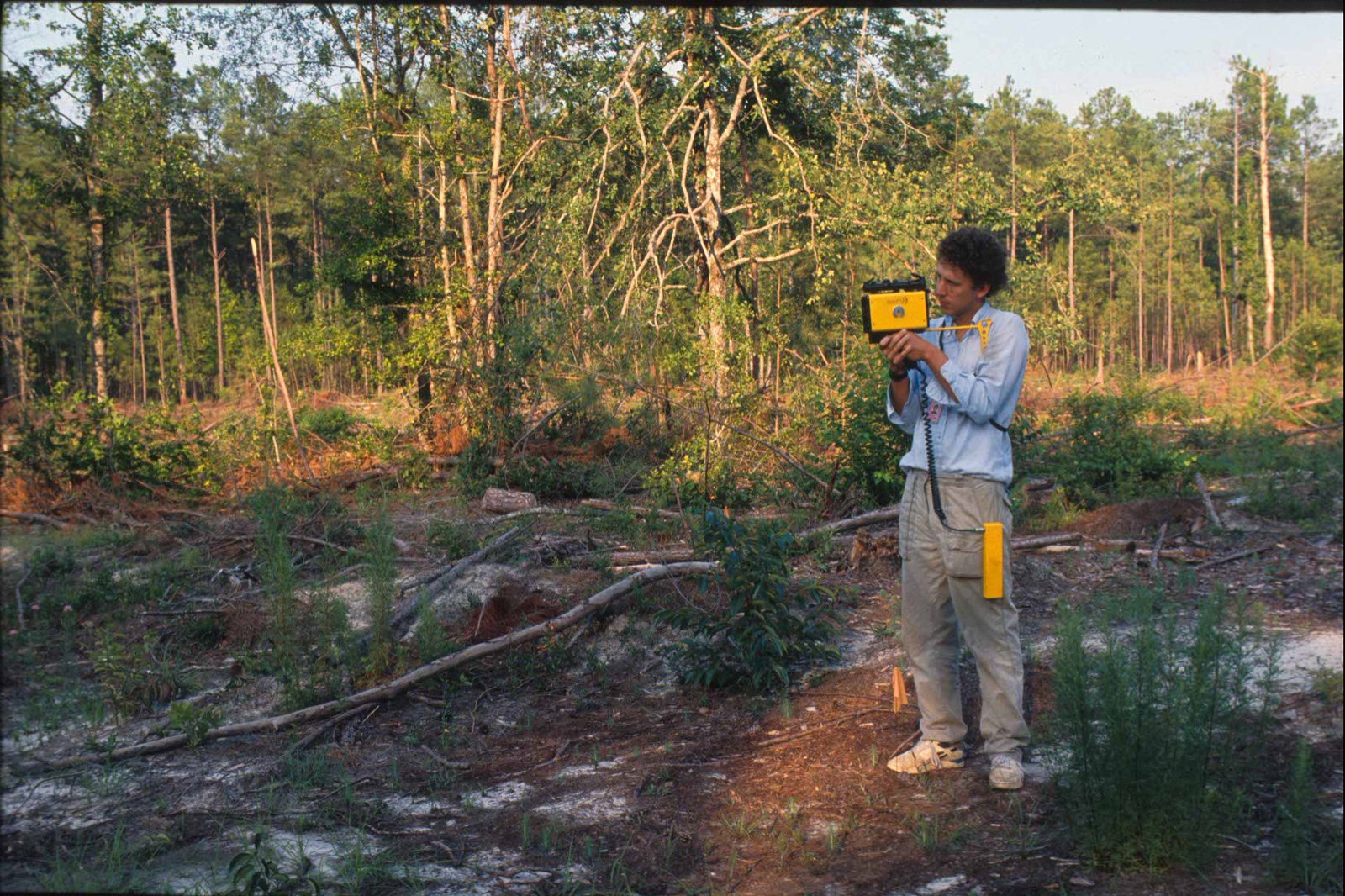
Nick Haddad using a laser transit
In my studies of butterflies I had a crew of 6-8 undergraduates who could sample every fragment every day. We conducted mark-recapture studies of butterflies, and the value of marked butterflies in studies of dispersal was highest in the 1-3 days following marking. We walked regular transects through experimental patches. All in 95 degree F and 95% humidity hot, South Carolina summers.
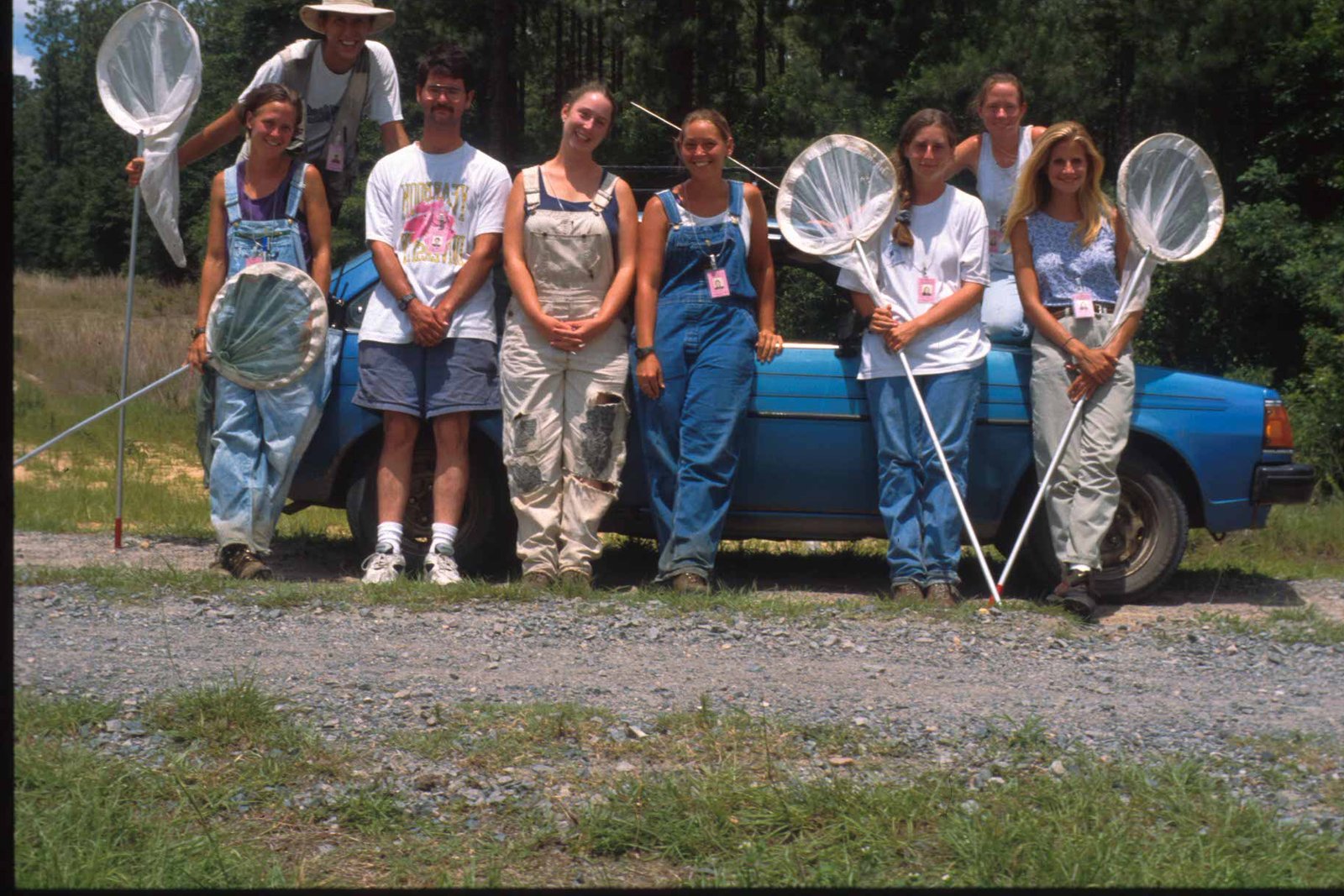
Field team in 1996
HS: A question about the people you acknowledge; could you tell us a little more about who these people were and how they helped?
NH: Robert Cheney and I together created the experiment. I was an energetic field ecologist, Robert brought skills at envisioning and running very large projects and precision from his prior career as a physicist needed to implement them.
HS: How long did the writing of this paper take, and when and where did you do most of the writing? How did the other authors get involved in the writing?
NH: This paper makes sense only in the context of the decade effort leading up to it and the papers published on individual species or taxonomic groups in the years prior. As this paper was a synthesis of these studies and unpublished data, it was written fairly quickly.
HS: Did this paper have a relatively smooth ride through peer-review? How did you decide to submit it to Ecology?
NH: As this was a synthesis of studies, including some that had been previously published, the experimental design and description of it had been previously vetted. It did not have trouble in peer review. Ecology seemed a natural destination for a synthetic paper and the experimental study.
HS: What kind of attention did this paper receive when it was published?
NH: The topic of landscape corridors in conservation biology had come under high scrutiny. It was justified at first by the Theory of Island Biogeography and quickly rose to prominence in conservation. Dan Simberloff and others questioned their value in conservation, and put forth predictions of negative effects that could arise unintentionally. Our research conducted at a large scale in an experimental context and across such a broad range of species provided strong evidence that corridors could function as intended. Our study helped to shift the discussion from the realm of concepts to data.
HS: What kind of impact did this paper have on your career? How did it influence the future course of your research?
NH: As a synthesis, this solidified my efforts and the efforts of my collaborators over the decade prior. It supported the condition that I view as necessary for implementation of corridors in conservation: they have to increase dispersal between fragments. This set up the next stage. In conservation, the outcome of interest is not dispersal; it is population persistence and maintenance of biodiversity and ecosystem function. This paper was a springboard to the broader focus (one that was not envisioned when the experiment was created).
HS: Today, 17 years after it was published, would you say that the main conclusions of this paper still hold true, more-or-less? Where does your thinking stand today with regard to the value of corridors for conservation?
NH: We have now studied the dispersal of many more species. Not only have our conclusions from 2003 been supported, we have found increased dispersal in even more types of species with different modes of dispersal, such as wind-dispersed plants. My take home lesson from this has been that the effects of corridors on dispersal are very broad and general.
HS: This paper has been cited close to 500 times. At the time of the study, did you anticipate that it would have such an impact? Would you know what it is mostly cited for?
NH: I thought this paper would have broad impact as it provided a general test across species from a large experimental study. I had greater confidence in the impact of this paper than of earlier ones that focused on individual species. The 2003 paper represented the breadth of the collaborative effort.
That said, I was, to some extent, surprised when you emailed about this particular paper. It is not the first paper (1999) or the most cited paper (Tewksbury, et al. 2002). There are others that have had similar impact (for example, Damschen, et al. 2006). If the criteria is an interaction between the concept (corridors increase dispersal) and species (collaboration among five labs), then this paper rises to the top in summarizing the entire first decade’s contributions to science.
HS: You say “introduced P. polionotus move more frequently between patches than do naturally occurring individuals, but their movement orientation is not biased (i.e. by homing; J. Brinkerhoff, unpublished data)”Was this data published in a separate paper subsequently?
NH: No, it is in the thesis which is publicly available.
HS: In the paper you define corridors as “long, thin strips of habitat that connect otherwise isolated habitat patches.” If you were to define a corridor today, would that change anything?
NH: I still like this definition. If I were writing the paper now, I would put this definition in the context of landscape connectivity more broadly (a concept that includes, but is broader than, corridors).
HS: You say “These results include the first demonstration that corridors affect interpatch movement of plants.” Have there been other demonstrations since?
NH: There have been two major advances on this topic within the Corridor Project. Josh Tewksbury (2002) led a study to show that corridors increased plant pollination that then increased fruit sets (and thus plant population demographics). Doug Levey (2006) led a study that showed that increased fruit dispersal could be explained by the behaviors of foraging birds.
HS: You say “it is instructive to ask why one species, S. hispida, did not show a corridor response. We propose two explanations.” Do we have a better understanding of the explanation today?
NH: When I created the experiment, I hypothesized that corridors would increase dispersal. My prediction was that they would increase dispersal without regard to the species. Although corridors have increased dispersal for most species, they have not for all species. Corridors had no effect on dispersal of the first butterfly that was the focus of the entire experiment when it was created. I was at first shocked, but the initial studies caused me to step back and reflect on the species that would and would not use corridors for dispersal. (as might be predicted, large habitat generalists do not use corridors).
HS: You say “More work is needed to understand how differences in movement impact plant and animal populations.” Could you reflect on the extent to which this has happened in the 17 years since this study?
NH: This has been the primary area of focus since 2000. Many studies in the Corridor Project have now examined the effects of corridors on species interacts and diversity. Some early examples include Josh Tewksbury’s efforts on corridor effects on pollination and seed sets; John Orrock’s efforts on corridor effects on predator (small mammal)-prey (seeds) interactions; and Ellen Damschen’s efforts on corridor effects on plant diversity. These happened nearly simultaneously with the 2003 paper, and there have been other studies since.
HS: Have you ever read this paper after it was published? If yes, in what context?
NH: I re-read it when I teach the concept of corridors in my courses, particularly in discussion-based graduate courses. I also re-read it recently in the context of a broader synthesis of all long-term fragmentation experiments (published in 2015).
HS: Would you count this paper as a favorite, among all the papers you have written?
NH: Although I will not go so far as to say it is my single favorite paper, it is among my favorites. This was the culmination of the first decade’s study in The Corridor Project. And it felt like a recognition of my earliest work setting up the experiment a decade earlier.
It is hard to compare a paper like this to one that contributed to it, Haddad (1999). The degree of satisfaction in publishing my first, first-authored publication and the first paper from The Corridor Project is impossible to compare to any paper since.

0 Comments